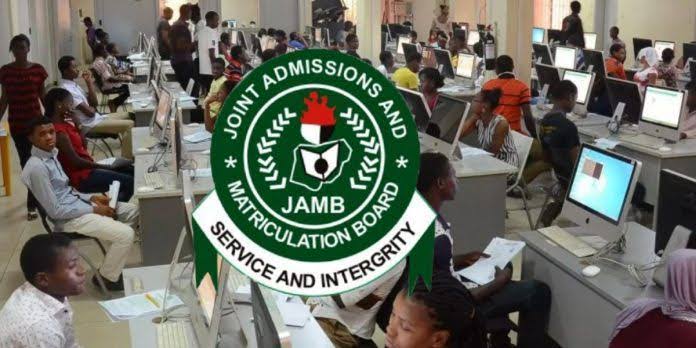Education stands as a universal right for every individual, yet millions of girls worldwide face formidable barriers that deny them this fundamental privilege. According to UNICEF’s 2016 data, approximately 32 million girls of primary school age and 29 million of lower secondary school age are deprived of education. UNESCO reports even graver statistics, with over 130 million girls aged 6 to 17 out of school globally. These girls, with aspirations and dreams akin to boys, encounter pervasive discrimination and neglect, often relegated to second-class status in societies where they suffer abuse, exploitation, and systemic marginalization.
Poverty is a significant barrier to education for many girls. Families living in poverty often prioritise immediate survival needs over education. When resources are limited, boys’ education is frequently prioritised over girls’. According to the World Bank, poverty disproportionately affects girls, especially in low-income countries, leading to higher dropout rates. Girls from the poorest households are four times more likely to be out of school compared to those from the wealthiest households. A teacher in a public secondary school in osun state explained that many students are not in school because of poverty even though the cost of education is close to nothing. In her words, she said, “A lot of female students in our community drop out of school due to lack of resources from their parents. When we as teachers try to visit them, they’ll tell us they can’t be in school as they also need to do menial jobs to help their parents put food on the table”. Many girls are forced into child labour to support their families financially. This work often interferes with their ability to attend school regularly or at all. The International Labour Organization (ILO) estimates that 152 million children are engaged in child labour, with girls making up a significant portion. These girls work in various sectors, including agriculture, domestic work, and informal trading, leaving little time for education. Child Labour mostly happens because of poverty. Many girls who should be in school are in the houses of rich people, doing domestic work.
Gender discrimination is also a pervasive issue that affects girls’ access to education. Cultural norms and societal expectations often dictate that girls’ primary roles are domestic, leading to limited support for their education. In many underdeveloped countries, girls are expected to marry and bear children at a young age, further limiting their educational opportunities. Discriminatory attitudes also manifest in school environments, where girls may face bias from teachers and peers. Early marriage and childbearing are significant barriers to girls’ education. The United Nations Population Fund (UNFPA) estimates that 12 million girls marry before the age of 18 each year. Once married, these girls are often expected to take on domestic responsibilities, making it challenging to continue their education. Pregnancy and childbearing also pose health risks that can lead to school dropout. In many cases, pregnant girls are expelled from school or face stigma that discourages them from continuing their education. They do not want to go to school due to discrimination about their pregnancy. Even after child birth, the stigma doesn’t allow most of them continue with their education.
Another reason hindering girls from having unrestricted access to education is the lack of adequate sanitary facilities in schools is a critical barrier for adolescent girls. Many schools do not have separate toilets or provide sanitary products, which can lead to absenteeism during menstruation. UNESCO reports that one in ten girls in sub-Saharan Africa misses school during their menstrual cycle, eventually leading to higher dropout rates. Access to proper sanitation and menstrual hygiene management is essential to ensuring that girls can attend school regularly.
Violence and safety issues, both at school and while travelling to and from school, can deter girls from attending. Girls are often at risk of sexual harassment, assault, and other forms of violence, which can make school environments unsafe. For instance, girls in rural areas who have to travel miles to another village to atrend schools might be at great risk. Most times, their parents will rather allow them learn a trade around than allow them travel unsafe miles to access education. According to Plan International, one in three adolescent girls has experienced violence in school. Fear of violence can lead parents to keep their daughters at home, especially in conflict-affected areas where the risk is higher.
Also, in many regions, there are simply not enough schools to accommodate all children. Rural and remote areas are particularly affected. Another teacher in Ifo, Ogun State mentioned that her community has only one secondary school. This definitely cannot serve all students. The Global Education Monitoring Report highlights that girls in rural areas are less likely to enroll in school due to the lack of infrastructure and long travel distances. When schools do exist, they may lack basic facilities and resources, further hindering girls’ education.
Educating girls is a transformative endeavour with far-reaching benefits. It equips girls with critical skills, empowers them to challenge societal norms, and enables them to contribute actively to their communities and economies. To effect meaningful change, collaborative efforts are essential. This involves fostering partnerships across sectors, engaging local communities, and advocating for policies that promote educational equity and create supportive environments for girls to thrive academically and socially.
Even when girls have access to schools, the quality of education can be poor due to insufficient resources. Overcrowded classrooms, lack of textbooks, and untrained teachers contribute to a substandard learning environment. According to UNESCO, many schools in low-income countries operate with minimal resources, affecting the quality of education that girls receive. Poor educational quality can lead to disengagement and higher dropout rates among girls.
Socio-cultural norms and practices often dictate that girls should prioritise domestic responsibilities over education. In many communities, educating girls is not seen as necessary or valuable. Cultural beliefs and practices significantly impact girls’ education, with traditional gender roles limiting their opportunities. These norms are deeply ingrained and can be challenging to change, perpetuating the cycle of educational disadvantage.
Conflict and crisis situations, such as wars, natural disasters, and pandemics, disrupt education systems and disproportionately affect girls. The long-term effects of growing up in a conflict zone are devastating and UNICEF estimates that 48.5 million children worldwide are missing school because of wars and conflicts. Schools may be destroyed, teachers displaced, and families forced to flee, leaving girls particularly vulnerable. According to UNICEF, girls in conflict-affected areas are 2.5 times more likely to be out of school than boys. The disruption of education during crises can have long-lasting effects, with many girls never returning to school. Girls living in conflict-affected countries are 90% more likely to be out of secondary school than those living in peace. Attacks on girls’ schools also mean many parents are afraid to send their daughters to school.
The absence of female role models in educational and professional settings can discourage girls from pursuing education. Seeing women in leadership and academic roles can inspire and motivate girls to aspire to similar achievements. The International Commission on Financing Global Education Opportunity highlights the importance of female teachers and mentors in encouraging girls to stay in school. However, in many regions, there is a significant gender gap in the teaching profession and leadership roles. Girls with disabilities experience double discrimination due to both their gender and their disability, placing them among the most marginalised groups of children. Data from the World Health Survey (2002-2004) revealed that only 41.7% of girls with disabilities completed primary education, compared to 52.9% of their non-disabled peers. According to the charity Leonard Cheshire Disability, these girls are almost “invisible” in many education programmes worldwide.
Achieving equitable access to education for girls globally demands concerted efforts across multiple fronts. Addressing barriers such as poverty, gender discrimination, and inadequate infrastructure requires comprehensive strategies that prioritize inclusive policies, community engagement, and targeted investments. Empowering girls through education not only enhances their individual capabilities but also fosters societal development and gender equality. When we dismantle socio-cultural norms that limit girls’ educational opportunities and ensuring safe and supportive learning environments, we can create pathways for girls to thrive academically and beyond. Sustainable progress necessitates ongoing commitment from governments, international organizations, and civil society to enact and enforce policies that promote educational equity and empower girls to fulfill their potential as leaders and change-makers in their communities and globally.











